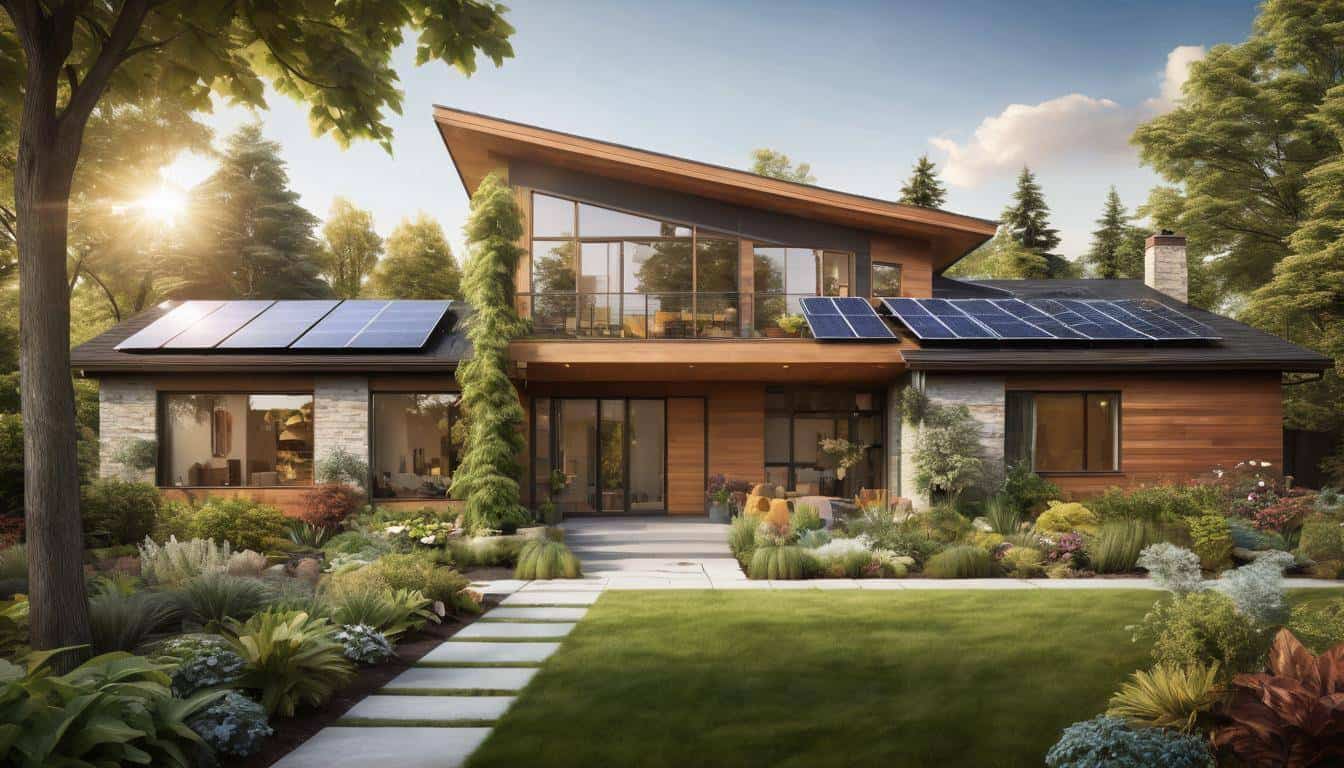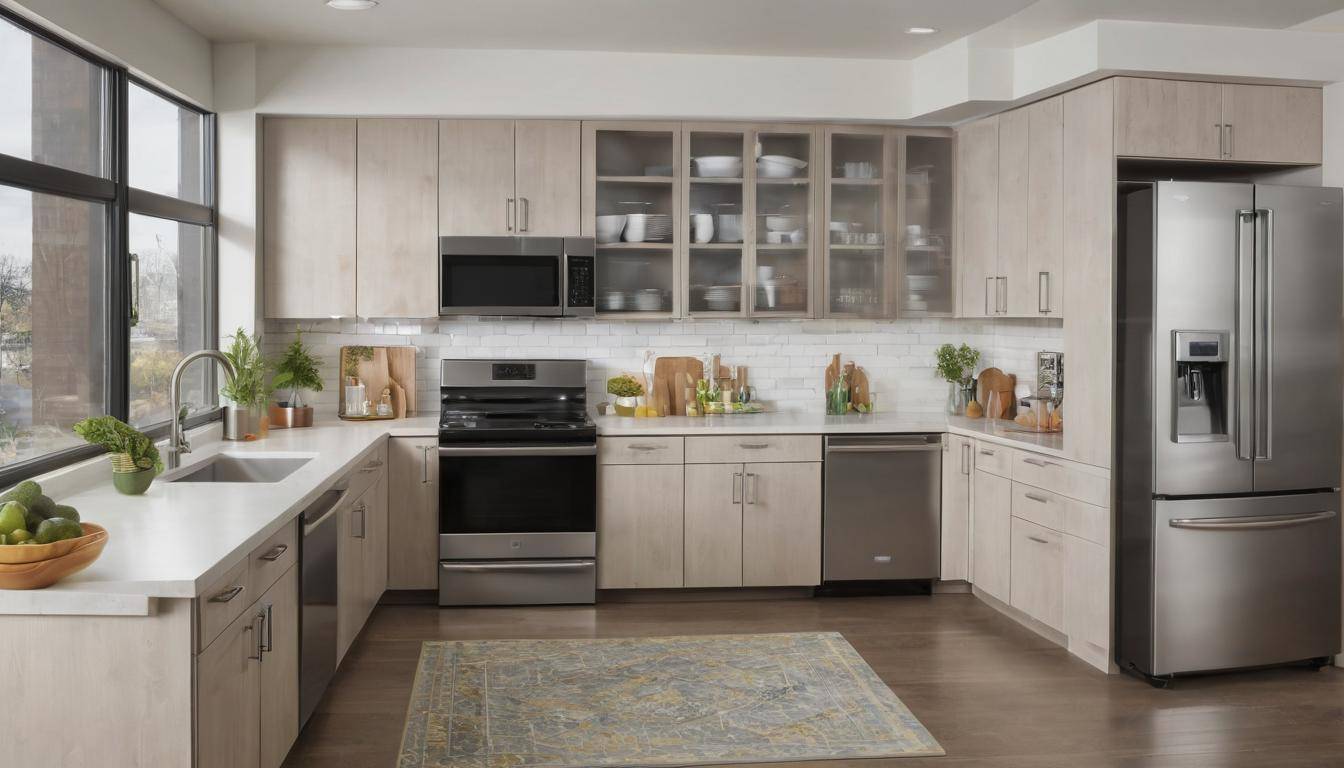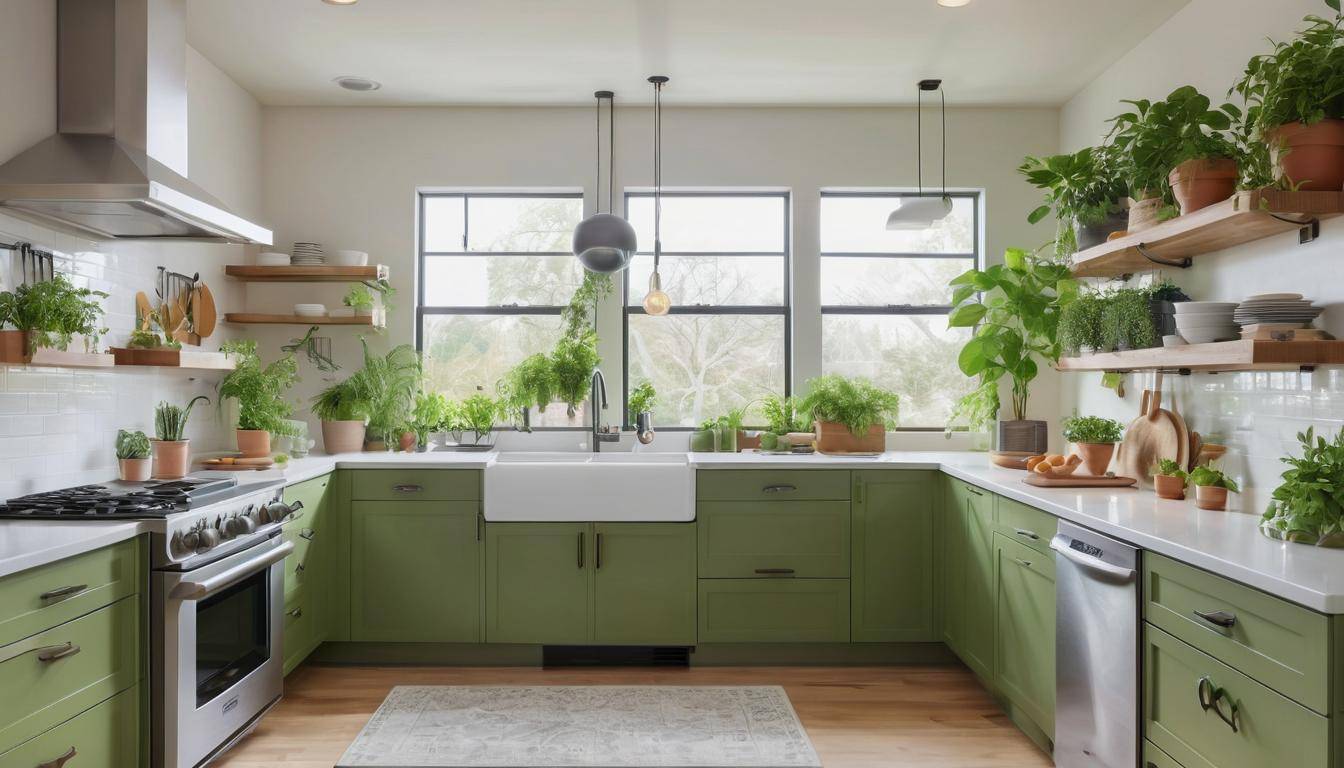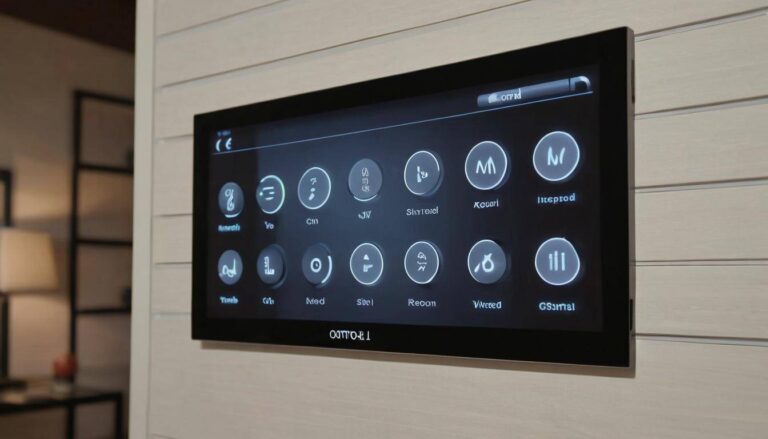Energy-Efficient Home Improvements Green and Cost-Saving Solutions
Feeling stressed by skyrocketing utility bills and uneasy about your home’s carbon footprint? You’re not alone; many homeowners face this dilemma daily. But what if there were ways to significantly cut those monthly costs and reduce environmental impact simultaneously? The answer lies in energy-efficient home improvements—solutions that aren’t just eco-friendly but also cost-effective.
After thoroughly exploring this topic using reliable sources and expert advice, we’ve gathered practical strategies that offer real savings without major disruptions or excessive upfront costs. Surprisingly, many regions provide generous tax credits and rebates for these upgrades, making them even more affordable. Let’s dive into how these changes can enhance your home’s comfort and value while lightening your utility expenses and environmental load.
Some examples of energy-efficient home improvements include air sealing, attic insulation, hot water heater upgrades, and window replacements. These improvements can help reduce energy loss, lower utility costs, and create a more comfortable living environment.

The Benefits of Energy-Efficient Home Improvements
Energy-efficient home improvements go beyond being eco-friendly; they have tangible benefits that directly impact your daily life and wallet. Let’s break down each of these benefits to understand how investing in energy-efficient upgrades can make a significant positive difference for you and the environment.
Reduction in Utility Bills
At the forefront of these advantages is the substantial reduction in utility bills. Making energy-efficient upgrades, such as installing better insulation, upgrading to energy-efficient appliances, or sealing air leaks, can save up to 30% on electricity costs, as reported by the U.S. Department of Energy. Imagine having extra funds each month that you would have otherwise spent on hefty utility bills – it’s like getting a pay raise without having to work harder!
Improved Indoor Comfort
In addition to saving money, energy-efficient home improvements contribute to improved indoor comfort. By maintaining consistent temperatures and reducing drafts, these upgrades create a more pleasant and comfortable living environment. Energy-efficient improvements help even out the temperature in your home, ensuring everyone stays cozy and content throughout the year.
Environmental Impact
Let’s not forget the environmental impact of energy-efficient home improvements. Reducing energy consumption significantly lowers your home’s carbon footprint, making a direct and positive contribution to global efforts to combat climate change. Every kilowatt-hour saved at home means less coal burned, less natural gas consumed, and ultimately less carbon dioxide released into the atmosphere. It may be a small change at an individual level, but when households across the globe make similar choices, it becomes a powerful collective movement.
Increased Property Value
Moreover, having an energy-efficient home can lead to an increase in property value. With growing awareness and emphasis on sustainability, energy-efficient homes are often seen as modern and desirable by potential buyers. They typically command higher market prices compared to standard homes. So, not only do you benefit from an enhanced living experience and cost savings while living in the home but also stand to gain from its increased value when it’s time to sell.
Tax Credits and Rebates
Finally, there are direct monetary incentives for making these improvements. Many regions offer tax credits and rebates for energy-efficient upgrades as an incentive for homeowners to invest in sustainable solutions. These monetary incentives further enhance the financial attractiveness of making energy-efficient home improvements and make striving for sustainability an even more rewarding endeavor.
In summary, investing in energy-efficient home improvements doesn’t just benefit your finances and lifestyle; it also has far-reaching effects that contribute to a more sustainable future for all.
Key Factors to Consider Before Starting
Considering energy-efficient home improvements is an exciting step toward a greener, more sustainable future. Before diving in, it’s wise to take stock and plan.
First things first, connect with a professional for an energy audit. This comprehensive evaluation will pinpoint the areas in your home that need improvement, especially when it comes to energy performance. An audit provides insights into where the most significant potential savings lie. It’s comparable to visiting a doctor for a thorough check-up; you wouldn’t start treatment without a thorough assessment of your health. Similarly, understanding your home’s energy baseline is crucial before making any impactful changes.
Once you have the results of your energy audit, it’s time to think about your budget. While energy-efficient upgrades tend to pay for themselves over time through reduced utility bills, there is an initial investment to consider. The return on investment (ROI) should guide your decisions. Focusing on projects with a high potential ROI can help you prioritize which improvements to pursue first.
It’s also important to look into local regulations and incentives. Many states offer rebates or tax credits for specific energy-efficient upgrades, as they align with broader environmental and energy-efficiency goals. These incentives can significantly offset the initial cost of your upgrades, making energy-efficient improvements even more financially attractive.
Furthermore, as you plan your journey toward a more energy-efficient home, consider prioritizing improvements based on the benefits relative to their costs. Some upgrades might offer substantial advantages over others, and evaluating these trade-offs will help you decide which projects will be most beneficial for both your pocket and the environment.
Lastly, don’t overlook the long-term perspective when planning your energy-efficient home improvements. Consider the lifespan of the materials and technologies you’re investing in to ensure that they’ll continue serving you well into the future. After all, the goal is not just short-term gains but enduring sustainability.
When embarking on this journey, remember that each step taken toward improving your home’s energy efficiency brings you closer to a greener tomorrow while positively impacting your finances.
As we gear up for an intensified focus on maximizing our homes’ energy efficiency, let’s dive into high-impact, cost-effective measures that can make a substantial difference in reducing energy consumption and lowering utility bills.
High-Impact Energy-Saving Upgrades
When it comes to making your home more energy-efficient, some upgrades deliver a bigger impact than others. Let’s start with the simple and effective change of installing programmable thermostats. These little devices can save up to 10% annually on your heating and cooling costs by regulating the temperature when you’re not at home or asleep, ensuring energy isn’t wasted unnecessarily. It’s like having a smart assistant for your home’s climate control.
One of the most impactful changes you can make is upgrading your light bulbs to LEDs. Not only do they use up to 75% less energy than traditional incandescent bulbs, but they also last much longer, which means fewer trips to the store and less waste in landfills. It’s a small change that adds up to big savings over time.
Beyond just changing light bulbs, investing in high-efficiency HVAC (Heating, Ventilation, and Air Conditioning) systems is another major upgrade that offers substantial energy savings. These systems are designed to consume far less energy while providing better climate control. They come equipped with advanced technologies that adjust their performance based on external conditions and your usage patterns, providing maximum efficiency and comfort.
Your water heating system represents another area where efficiency upgrades can make a big difference. Options like tankless or solar water heaters can reduce your water heating costs by an impressive 50%. Additionally, sealing and insulating ducts are crucial for maximizing energy conservation. By preventing air leaks that waste heating and cooling energy, you retain more of the conditioned air within your home, resulting in lower utility bills.
By implementing these high-impact energy-saving upgrades, you’re not only reducing your environmental footprint but also saving on utility costs in the long run. It’s all about making smart choices that benefit both your home and the planet.
Moving forward from these impactful high-energy saving changes, let’s now shift our focus to explore techniques for efficient insulation.
Efficient Insulation Techniques
Proper insulation is like wrapping a cozy blanket around your home to keep the heat in during winter and out during summer. One of the most effective insulation methods is spray foam insulation. It works wonders, covering every nook and cranny, forming an excellent air-tight seal and preventing heat loss or gain. This robust insulator is particularly advantageous for spaces with many gaps, as it expands to fill these crevices, leaving no room for air leaks.
Attic Insulation
When it comes to attics, blown-in insulation is a popular choice. Made of cellulose or fiberglass, this type of insulation is cost-effective and easy to install. It’s great at filling in all the small nooks and crannies that other types of insulation might miss, ensuring a complete and thorough layer of protection against temperature fluctuations.
Wall Insulation
For wall insulation, consider using rigid foam boards or insulated concrete forms. These materials effectively reduce heat transfer through walls, providing an additional barrier to keep your home’s internal temperature stable. This helps in reducing the workload on your heating and cooling systems, ultimately leading to lower energy bills.
Underfloor Insulation
Now, let’s get down below. Underfloor insulation plays a critical role in preventing heat loss through the floor. This factor becomes particularly crucial for homes with crawl spaces. Sealing off these spaces with proper insulation prevents cold air from seeping into your home during winter and retains the cool air during summer, enhancing the overall energy efficiency of your house.
Weatherstripping Doors and Windows
Doors and windows can be significant sources of energy loss if not properly sealed. That’s where weatherstripping comes in—it seals up those little gaps around doors and windows to help maintain the temperature inside your home. By keeping conditioned air from escaping outside or allowing outdoor air to come inside, weatherstripping significantly reduces the strain on your heating, ventilation, and air conditioning (HVAC) system.
By employing these various insulation techniques strategically throughout your home, you can create an efficient barrier against unwanted temperature fluctuations. Not only does this make your home more comfortable year-round, but it also leads to substantial savings on your energy bills while reducing your environmental footprint.
The next frontier in creating an eco-friendly haven lies in upgrading the appliances that power our homes. Now, let’s explore how switching to energy-saving appliances can elevate your efforts in achieving a more sustainable household.
Upgrading to Energy-Saving Appliances

One of the most impactful ways to save energy and reduce household bills is by integrating energy-saving appliances into your home. The right appliances can make a considerable dent in overall energy consumption, resulting in noticeable savings over time. By investing in ENERGY STAR-rated appliances, which adhere to strict efficiency guidelines, homeowners can significantly cut down on their utility costs while simultaneously reducing their environmental footprint.
For instance, ENERGY STAR refrigerators are designed to consume approximately 15% less energy than their non-certified counterparts. This may not seem like much at first, but over several years, this difference can add up to substantial cost savings. A similar trend is observed with energy-efficient washing machines, which use about 25% less energy and 33% less water compared to traditional models. Not only do these appliances help the environment by using fewer resources, but they also put more money back in your pocket.
When it comes to cooking, consider replacing your standard gas or electric range with an induction cooktop. These cooktops offer faster cooking times and consume less energy while doing so. They are not just convenient but also make a significant impact on your kitchen’s energy consumption. In addition, equipping your home with smart appliances that can be controlled remotely allows for the effective management of energy use. This means you can regulate the usage of these appliances even when you’re away from home, ensuring that they’re only in operation when necessary and saving you money in the process.
Let’s take a closer look at a common appliance, the washing machine. An older model might use around 40 gallons of water per load, whereas a modern ENERGY STAR-rated model can use as little as 14 gallons for the same load. The difference is staggering and immediately evident on both your water bill and global conservation efforts.
Consider these appliances as partners in your quest for an energy-efficient home. Just as a captain relies on dependable crew members to steer a vessel in the right direction, choosing the right appliances ensures that you have reliable partners in cutting down your energy usage and decreasing your environmental impact.
Upgrading to energy-saving appliances isn’t just about saving money; it’s also about embracing sustainability and making choices that benefit both your household finances and the planet.
As we venture further into optimizing our homes for energy efficiency, let’s now explore the crucial role of efficient windows and doors in creating an eco-friendly living space.
Incorporating Efficient Windows and Doors
When we contemplate making our homes more energy-efficient, the impact of our windows and doors often goes unnoticed. However, they play a significant role in maintaining the temperature of our homes. Traditional single-pane windows can let heat escape during winter and allow it to seep in during summer, greatly impacting our heating and cooling bills.
Replacing these outdated windows with more modern double or triple-pane versions can make a world of difference. These advanced window technologies offer improved insulation, helping to keep the inside temperature consistent by preventing heat or cool air from escaping. In addition, Low-E (low-emissivity) coatings on glass provide an extra layer of thermal protection by reflecting heat back into the home during winter and out during summer. This makes a substantial impact on energy performance throughout the year.
Imagine having tea in the conservatory without feeling like you’re sitting in a greenhouse in the summer or a wind tunnel in the winter – efficient windows make this possible! Similarly, doors are often overlooked, yet they are equally influential in maintaining energy efficiency. Insulated steel and fiberglass doors surpass traditional wood options in thermal performance. By providing better insulation and reducing heat transfer, these materials contribute significantly to lower energy consumption.
It’s not just about the materials; proper installation is essential. Installing weather-resistant seals around doors and windows helps prevent air leaks, which can lead to temperature fluctuations and higher energy bills. This careful approach to sealing ensures that your heating or cooling efforts aren’t wasted due to air escaping.
The impact of upgrading to energy-efficient windows and doors is not merely theoretical. Homeowners can expect to see savings of up to 30% on their heating and cooling costs after making these strategic investments in their homes. That’s a significant reduction that not only benefits your wallet but also creates a more comfortable living environment.
By investing in efficient windows and doors with advanced insulation and protective features, you’re taking concrete steps towards reducing your carbon footprint and creating a more sustainable home.
As we’ve seen the importance of efficient windows and doors, now let’s explore simple modifications that can bring substantial savings on your energy expenses.
Simple Modifications for Big Savings

When it comes to saving energy, every little change makes a difference. You might be surprised how small adjustments can add up to significant savings on your energy bills. From room temperature to water usage, these simple changes help you use energy more efficiently.
Let’s start with ceiling fans; they may seem like a luxury, but they are practical energy-savers. Using ceiling fans strategically can reduce your need for air conditioning and lower your energy costs by making a room feel cooler by up to 4 degrees Fahrenheit, which means you can rely less on air conditioning without sacrificing comfort.
Power strips might seem like a minor detail, but you’d be surprised by how much electricity electronics use when they’re turned off but still plugged in. These “phantom loads” contribute to your overall energy consumption. By plugging devices into power strips and turning the strips off when not in use, you can eliminate phantom loads and reduce unnecessary energy usage.
Low-flow showerheads and faucets are another simple yet effective upgrade for saving water and reducing water heating energy. These fixtures limit the flow of water while maintaining adequate pressure, translating to less water usage during showers or when using the sink without compromising performance.
Draft stoppers, also known as door snakes, might sound old-fashioned, but they’re very effective at preventing heat loss from your home. By placing them along the bottom of exterior doors, they block drafts from entering and warm air from escaping, thus reducing the workload on your heating system.
Regularly cleaning or replacing HVAC filters is an easy maintenance task that many people overlook. Clogged filters can impede airflow and cause your HVAC system to work harder than necessary, leading to increased energy consumption. By keeping the filters clean, you ensure efficient operation and avoid unnecessary energy use.
These relatively simple adjustments allow you to maximize the efficiency of your home’s energy consumption without compromising on comfort or convenience. Making these changes part of your routine will not only lead to cost savings but also contribute to a greener environment.
With these fundamental changes in mind, let’s now dive into more advanced solutions that integrate renewable energy sources and further enhance the sustainability of your home.
Integrating Renewable Energy Solutions
One of the most exciting developments in home improvement is the integration of renewable energy solutions. For a long time, the idea of using energy from the sun or wind in our homes seemed like something only people with lots of money and a particular interest in tech could do. But not anymore. Now, more and more people realize that using renewable energy isn’t just good for the environment; it can also save us money.
Solar Panels have become hugely popular, and for a great reason – they can significantly cut costs when it comes to electricity bills. These panels soak up sunlight and convert it into electricity that powers your home. They can be placed on your roof or in your yard, and work even on cloudy days. By installing solar panels, you can reduce electricity bills by up to 70%, which can make a big difference over time.
Wind Turbines are another renewable energy solution. They’re like little windmills that spin in the wind and create electricity. They work best in areas with lots of open space and strong winds. In places like these, small wind turbines can cover part of a home’s electricity needs, reducing reliance on traditional power sources and providing a more sustainable and cost-effective alternative.
Aside from electricity savings, solar water heaters offer an excellent way to integrate renewable energy solutions by reducing water heating expenses. They use the sun’s energy to heat water directly, reducing the need for traditional water heating methods powered by electricity or gas. With solar water heaters, you can reduce water heating expenses by up to 60%.
For those who want to dip their toes into renewable energy without committing to major installations, there are smaller options too. Solar-powered outdoor lighting adds aesthetic appeal while contributing to sustainable practices, and solar water heaters for pools are an excellent choice for integrating renewable energy into recreational space without intensive impact on home systems.
Imagine your home as a little ecosystem where you harness natural resources to power your daily needs, much like how plants harness sunlight for energy through photosynthesis. It’s not only about saving money; it’s about living more sustainably too.
With so many renewable energy solutions available nowadays, there are options to suit every lifestyle and budget. Integrating these technologies not only reduces costs but also demonstrates a commitment to a greener future for our planet.
The adoption of renewable energy systems represents not only a financial investment but also a step towards a more environmentally conscious lifestyle. Every contribution toward sustainability makes a difference in preserving our planet for future generations.
What are the top energy-efficient upgrades for a home?
The top energy-efficient upgrades for a home include installing solar panels, upgrading to high-efficiency appliances, improving insulation and weatherization, and using smart thermostats. Solar panels have become more affordable and can significantly reduce energy bills while also reducing carbon emissions. Upgrading appliances to Energy Star rated models can save up to 50% on energy consumption. Improving insulation and weatherization helps in preventing heat loss during winter and heat gain during summer, leading to lower energy usage throughout the year. Smart thermostats allow for precise temperature control, learning patterns, and adjusting settings accordingly to optimize energy usage. According to studies, implementing these upgrades can save homeowners up to 30-50% on their energy costs annually.
What are some cost-effective ways to reduce energy consumption in a home?
Some cost-effective ways to reduce energy consumption in a home include switching to LED light bulbs, properly insulating the home, sealing air leaks, and upgrading to energy-efficient appliances. LED bulbs use up to 75% less energy than traditional incandescent bulbs, while proper insulation and sealing air leaks can reduce heating and cooling costs by up to 20%. Additionally, energy-efficient appliances can save homeowners hundreds of dollars per year on utility bills.
Are there any government incentives or rebates available for energy-efficient home improvements?
Yes, there are government incentives and rebates available for energy-efficient home improvements. In recent years, governments worldwide have been actively promoting the adoption of green technologies and offering financial benefits to homeowners who make energy-efficient upgrades. According to a report by the U.S. Energy Information Administration in 2023, around 74% of American households took advantage of these incentives, resulting in an average annual saving of $900 per household on utility bills. These incentives typically include tax credits, grants, and low-interest loans, making green home improvements more affordable and encouraging sustainable practices in the housing sector.
How do energy-efficient appliances contribute to reducing utility bills?
Energy-efficient appliances help reduce utility bills by consuming less energy compared to traditional appliances. They are designed with advanced technologies such as improved insulation, better heat exchange, and smart programming features. For example, replacing an old refrigerator with an energy-efficient one can save up to $100 per year in electricity costs. Additionally, ENERGY STAR certified appliances are proven to consume 10-50% less energy than standard models, resulting in significant savings over time.
How can I improve the insulation of my home to make it more energy-efficient?
One effective way to improve the insulation of your home and make it more energy-efficient is by adding insulation materials to your walls, attic, and floors. Insulating these areas can significantly reduce heat loss during colder months and minimize heat gain during hotter months. According to a study conducted by the U.S. Department of Energy, proper insulation installation can save homeowners up to 30% on their heating and cooling costs annually.





